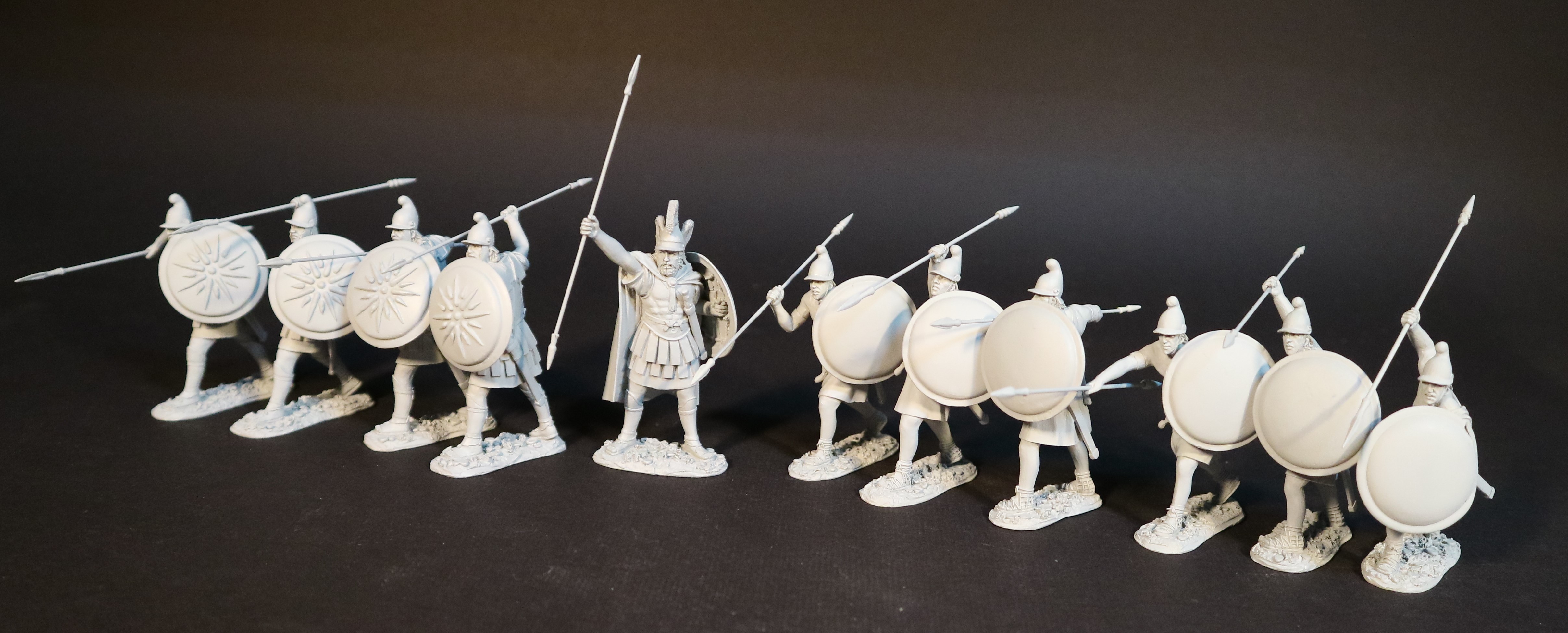26th Mar 2024
John Jenkins Preview: Macedonian Army

The Macedonian phalanx was an infantry formation developed by Philip II and used by his son Alexander the Great to conquer the Achaemenid Empire and defeat armies of other kingdoms.
Phalanxes remained dominant on battlefields throughout the Hellenistic period, until they were ultimately displaced by the Roman Legions.
In 359 BC the Macedonian army led by the king Perdiccas III, was decidedly defeated by the Illyrians. Perdiccas’ brother Philip II had been a hostage in Thebes for much of his youth, and what he had learned influenced his restructuring of the Macedonian infantry.
Philip’s military reforms were a new approach to the current hoplite warfare, which focused on their shield and thrusting spear.
Philip’s new focus was on a new weapon, the Sarissa. He called the soldiers in the phalanx Pezhetairoi, meaning “foot companions”.
Each phalangite carried as his primary weapon a Sarissa, a double pointed pike over 18 foot in length. The Sarissae were carried in two pieces before a battle and then slid together when they were to be used.
At close range such weapons were of little use, but an intact phalanx could easily keep its enemies at a distance. The weapons of the first few rows of men all projected beyond the front of the formation, so that there were more spear points than available targets at any given time.
Men in rows behind the initial rows angled their sarissae at angles in an attempt to ward off arrows or other projectiles.
There was a secondary weapon called a xiphos, which was a short sword.
They also had a smaller and flatter shield than that of the Greek Hoplon. The shield was worn hung around the neck so as to free up both hands to wield the sarissa.
The Phalanx consisted of several blocks of men, called syntagmata. There were 16 of these with 16 men in each Syntagmata. Each block was commanded by a syntagmatarchy, who together with his subordinate officers would form the first row of each block.
Neither Philip or Alexander actually used the phalanx as their arm of choice, but instead used it to hold the enemy in place while their heavy cavalry broke through the enemy ranks.
The Macedonian cavalry fought in a wedge formation and was almost always stationed on the far right.
The hypaspists an elite infantry unit were stationed on the immediate right of the phalanx wielding hoplite sized shields and spears.
The left flank was generally covered by allied cavalry usually Thessalians, which fought in a rhomboid formation and served mainly in a defensive role.
THESSALIAN CAVALRY
The Army of the Kingdom of Macedon was among the greatest military forces of the ancient world.
The Thessalians are frequently referred to as the best cavalry units in the Macedonian army. This is thought to be because they were raised from the aristocracy of Thessaly, and were the finest horsemen in the Greek world.
The Vanguard squadron was the Pharsalian ile, which formed Parmenio’s personal bodyguard on the left wing at Gaugamela. It was the Thessalians counterpart to the Royal squadron of the Companions.
The Thessalians were identified by their distinctive national cloak, which was identifiable by the two points hanging down both in front and behind the wearer. These cloak ends used to bellow out behind the galloping horseman and gave the cloak its Greek nickname of “Thessalian Wings.”
Otherwise the details of dress are similar to the Companions.
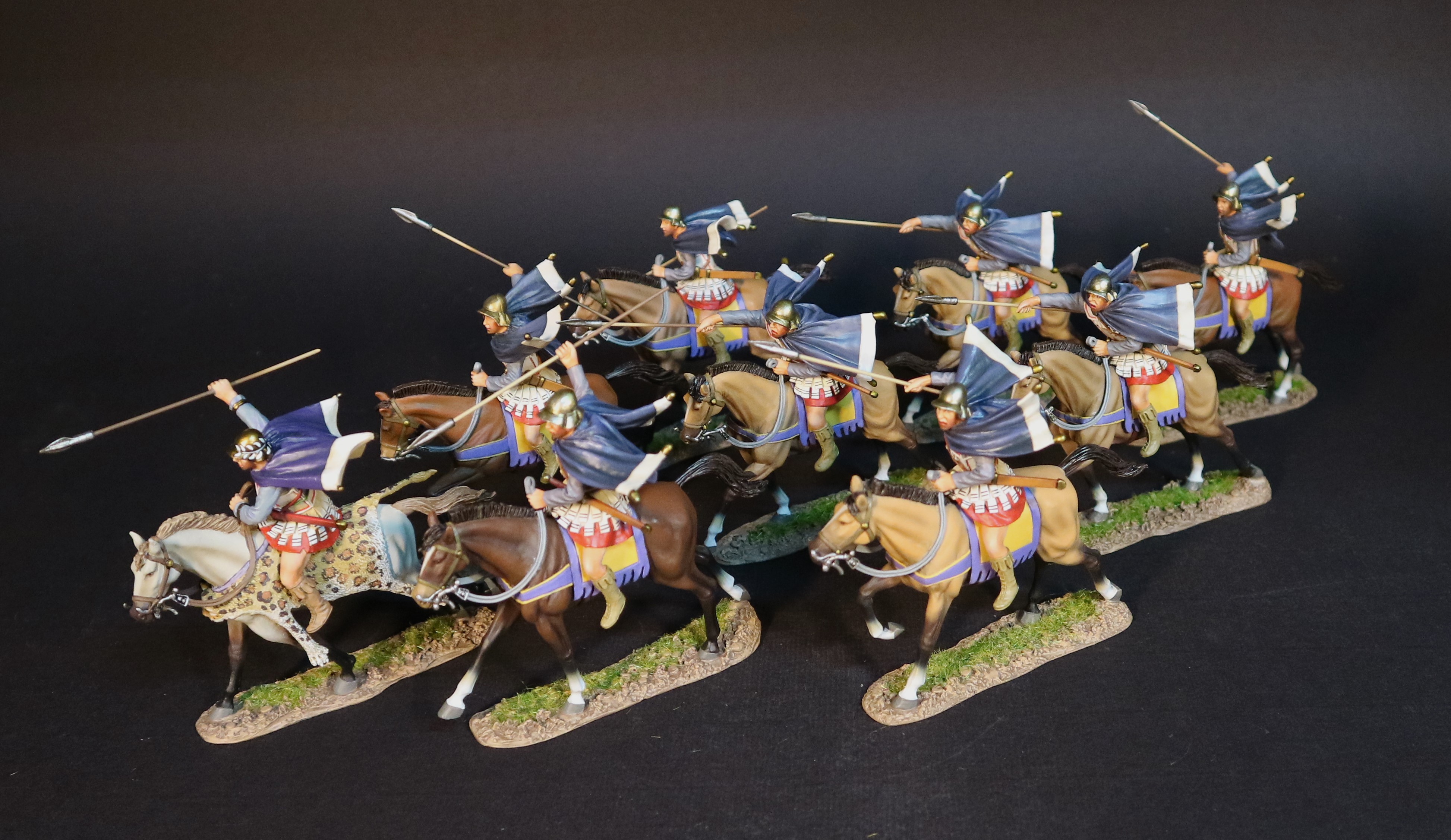
Its organization and weaponry were similar to the Companion cavalry, though the earlier Thessalian way of fighting emphasized the use of javelins. The Thessalian cavalry was famed for its innovative use of rhomboid formations, said to have been developed by the Tagos (head of the Thessalian league) Jason of Pherae.
This formation was very efficient for manoeuvering, as it allowed the squadron to change direction at speed while still retaining cohesion.
This tactic was later developed by Philip of Macedonia into the Macedonian Wedge formation.
The numbers given for Alexander’s invasion of the Persian Empire included 1,800 such men. They were typically entrusted with the defensive role of guarding the left flank from enemy cavalry, allowing the decisive attack to be launched on the right. They often faced tremendous opposition when in this role. At Issus and Gaugamela, the Thessalians withstood the attack of Persian cavalry forces, though greatly outnumbered.
Parmenio was a Macedonian general in the service of both Philip II of Macedon, and Alexander the Great. A Thessalian nobleman, Parmenio rose to become Philips chief military lieutenant and Alexander’s military general.
He was assassinated after his son Philotas was convicted on a charge of treason.
Although Alexander was recognized as king in Macedonia in October 336 BC, his accession was opposed by Attalus, a general in Parmenio’s army. In response, Parmenio put the general to death even though Parmenio was father in law to Attalus. Parmenio recognized that this was a necessary act if Alexander’s succession was to be smooth. As a consequence, Alexander was in Parmenio’s debt.
As a result, a number of Parmenio’s relatives were placed by Alexander in key positions in the Macedonian army. The youngest son, Nikanor became commander of the infantry regiment known as the shield bearers, his son in law Coenus commanded a phalanx battalion while another relative named Nicanor became admiral of the navy.
Parmenio’s oldest son Philotas was made commander of the Companion cavalry.
The main building block of the Macedonian cavalry was the “ile” (squadron) of 200 men, commanded by an “ilarch” and divided into four “tetrarchiai” of 49 men, each under the command of a “tetrarch”
The tactical formation of each Tetrarchia was the wedge, an invention of Philip of Macedonia, with the Tetrarch at the point, and senior troopers riding in the middle and at each end of the base line.
It was the aim of Alexander to advance his army obliquely so as to cause dislocations in the enemies line as they attempted to outflank him on his right.
The Persian cavalry column attempting to turn his right flank would be kept at bay by successive charges of his light cavalry, delivered squadron by squadron. As the persian cavalry was forced to move further to the right, they would eventually lose contact with their main battle line. As soon as this dislocation was observed in the persian battle line, Alexander personally led the decisive charge of his heavy cavalry straight for it. This was not possible until new cavalry formations which allowed the squadrons to redeploy rapidly and reorient the axis of attack. The wedge gave this flexibility to Alexander’s cavalry, which is vividly illustrated in Curtius’ description of the cavalry fighting at Issus which took place when a massive Persian Cavalry column charged the Thessalian cavalry.
“But on the right the Persians were strongly attacking the Thessalian horsemen, and already one squadron had been ridden down by their very onset, when the Thessalians, smartly wheeling their horses about, slipped aside and returning to the fray, with great slaughter, overthrew the barbarians, whom confidence in their victory has scattered and thrown into disorder”
The Thessalian heavy cavalry accompanied Alexander during the first half of his Asian campaign and continued to be employed by the Macedonians as allies until Macedon’s final demise at the hands of the Romans.
MACEDONIAN HYPASPISTS
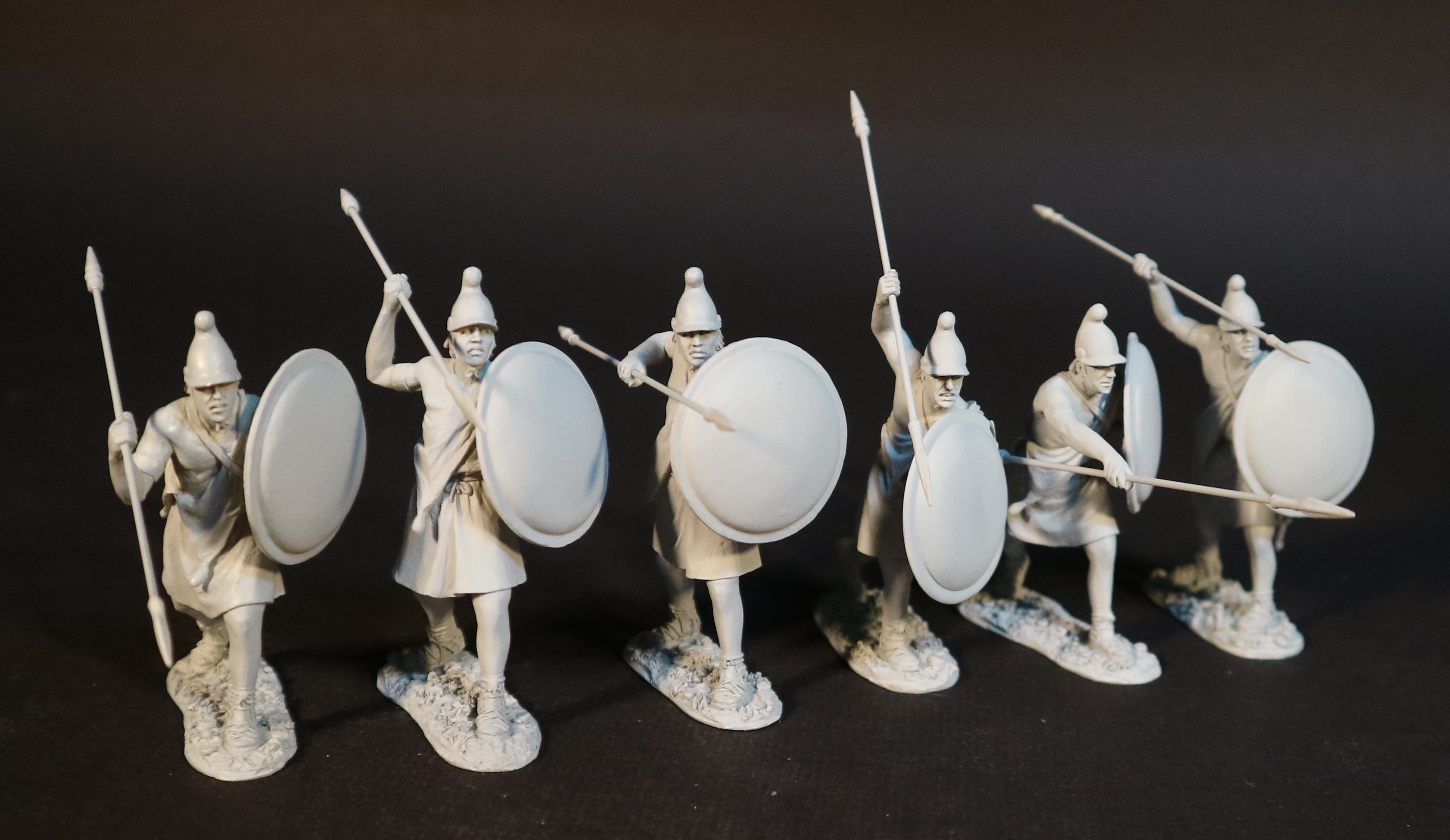
The Macedonian Hypaspists were positioned on the flank of the Phalangites phalanx.
Their own flanks were protected by light infantry and cavalry.
Their job was to guard the flanks of the large and unwieldy pike phalanx. The armoured phalangites with their sarissas were not particularly agile or able to turn quickly, so hypaspists were positioned to prevent and protect attacks on the vulnerable sides of the phalanx formation.
Their role was vital to the success of the Macedonian tactics because the phalanx was all but invulnerable from the front, and with its layers of iron spikes moving in unison, were used as the anvil in their hammer and anvil tactics. The Companion cavalry was the hammer that smashed the enemy against the anvil of thousands of iron spikes.
The Hypaspists protected the vulnerable phalanx flank, and were able to conduct maneuvers and use tactics, which owing to their hoplite panoply of weapons, would have been impossible to be performed by the phalangites.
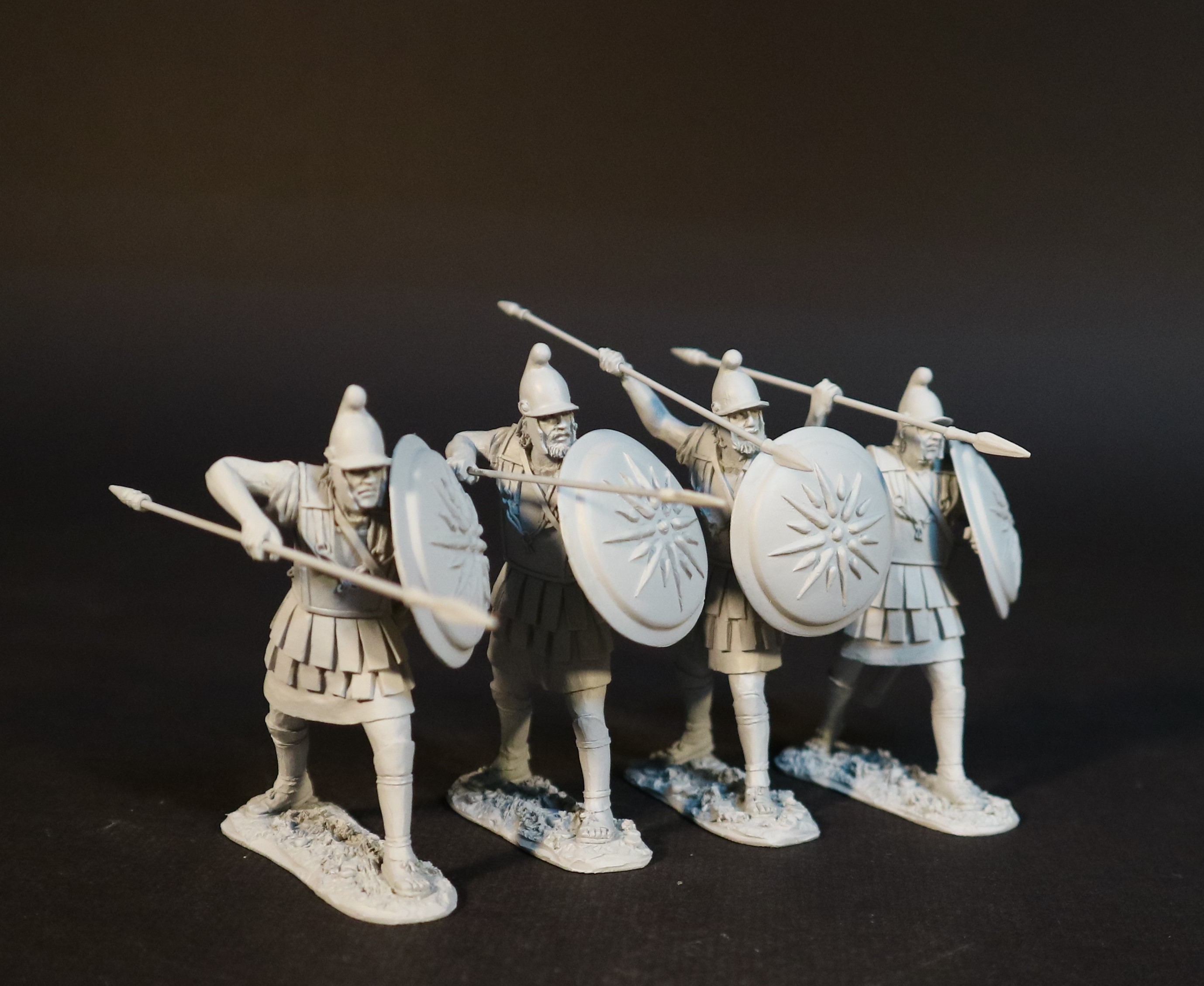
THE ARGYRASPIDES (SILVER SHIELD)
The Argyraspides were elite Macedonian soldiers who carried silver plated shields. The original unit were Hypaspists serving in the army of Alexander the Great.
They were a division of the Macedonian army, and were picked men commanded by Nicanort, the son of Parmenio, as well as Seleucus, and were held in high honour by Alexander.
They were hypaspists, having changed their name to the Argyraspides whilst in India under Alexander.
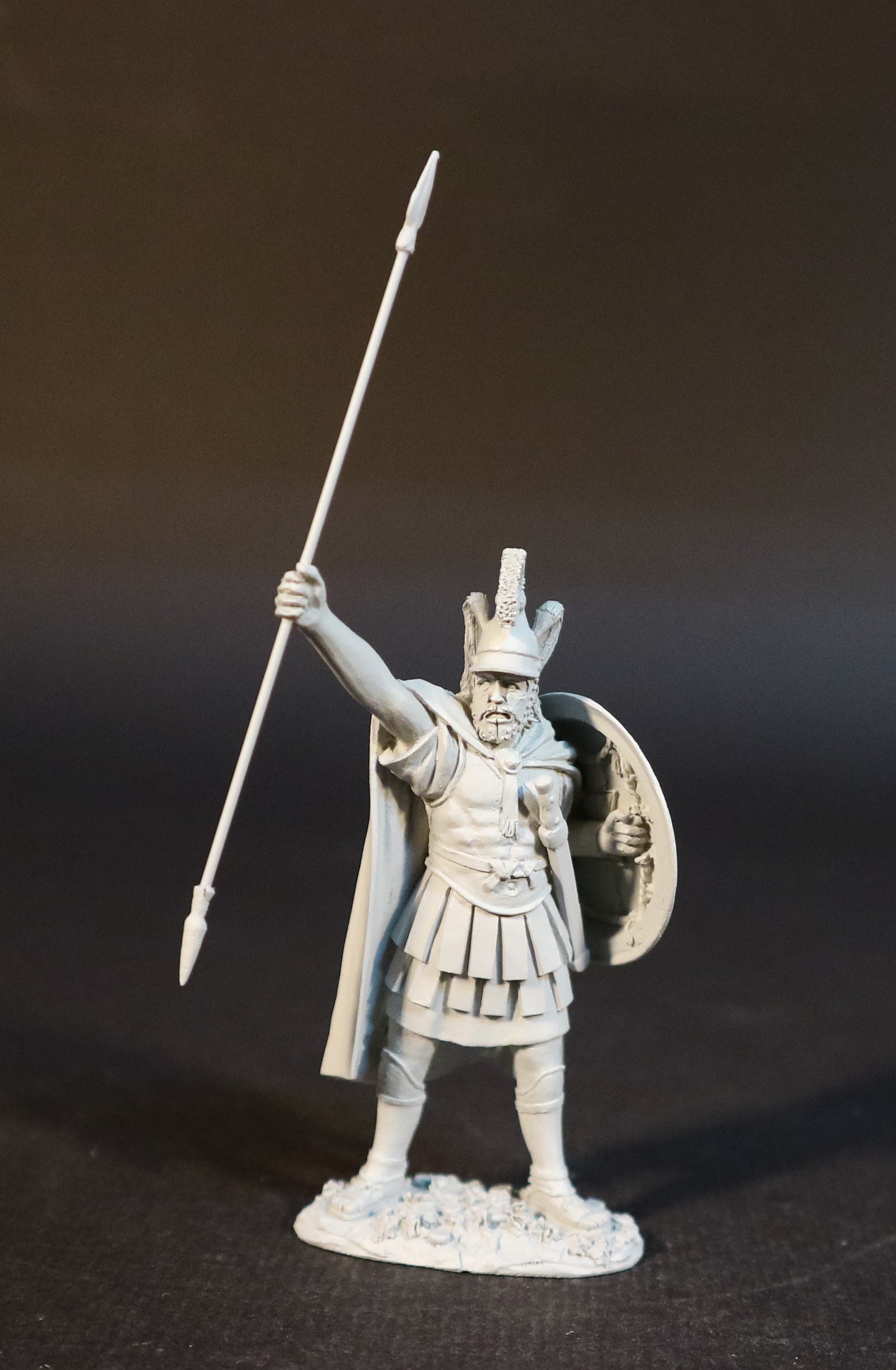
NICANOR, SON OF PARMENIO,
Nicanor, was a distinguished officer in the service of Alexander the Great.
He is first mentioned at the passage of the Danube river, in the expeditionof Alexander against the Getae, 335, when he led the phalanx.
During the expedition into Asia he appears to have held the chief command of the Hypaspists.
It is mentioned of him holding this post in the three great battles of the Granicus, Issus and of Gaugamela.
He was to accompany Alexander during the rapid march in pursuit of the king Darius III Codmannus in 330. This was probably his last service, as he was to die of disease shortly afterwards, during the advance into Bactria.
His death at this time was considered a fortunate event, as it prevented him from participating either in the designs or the fate of his brother Philotas.
